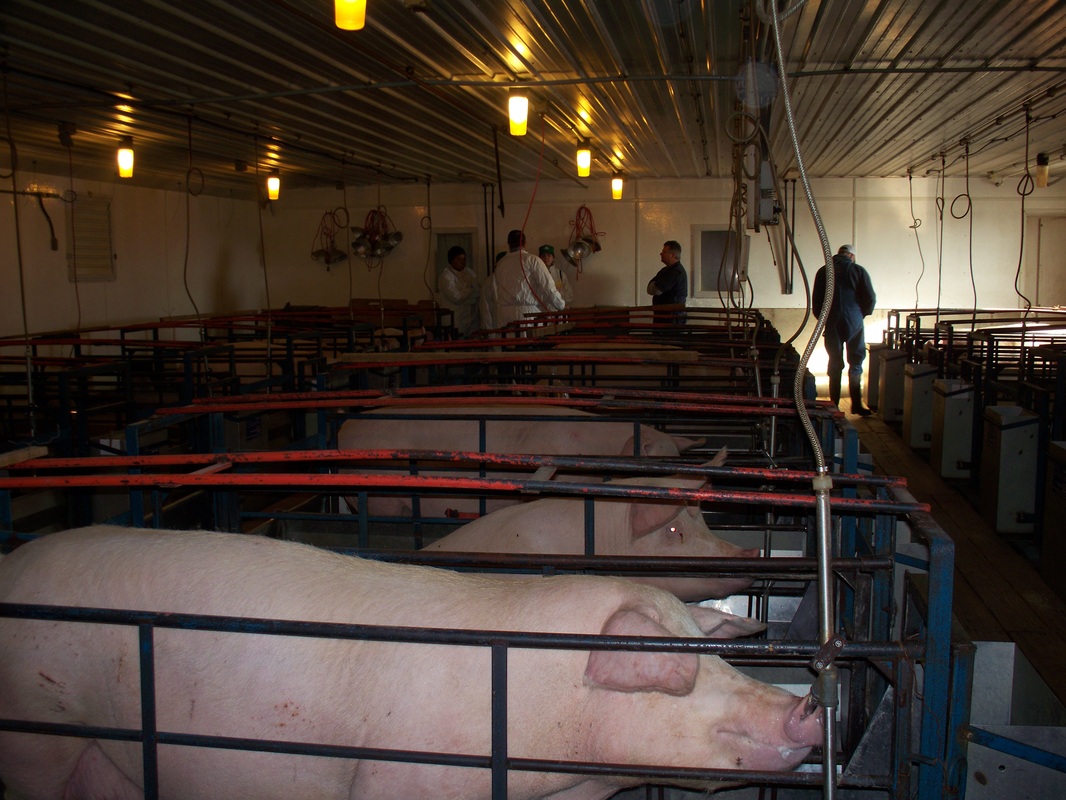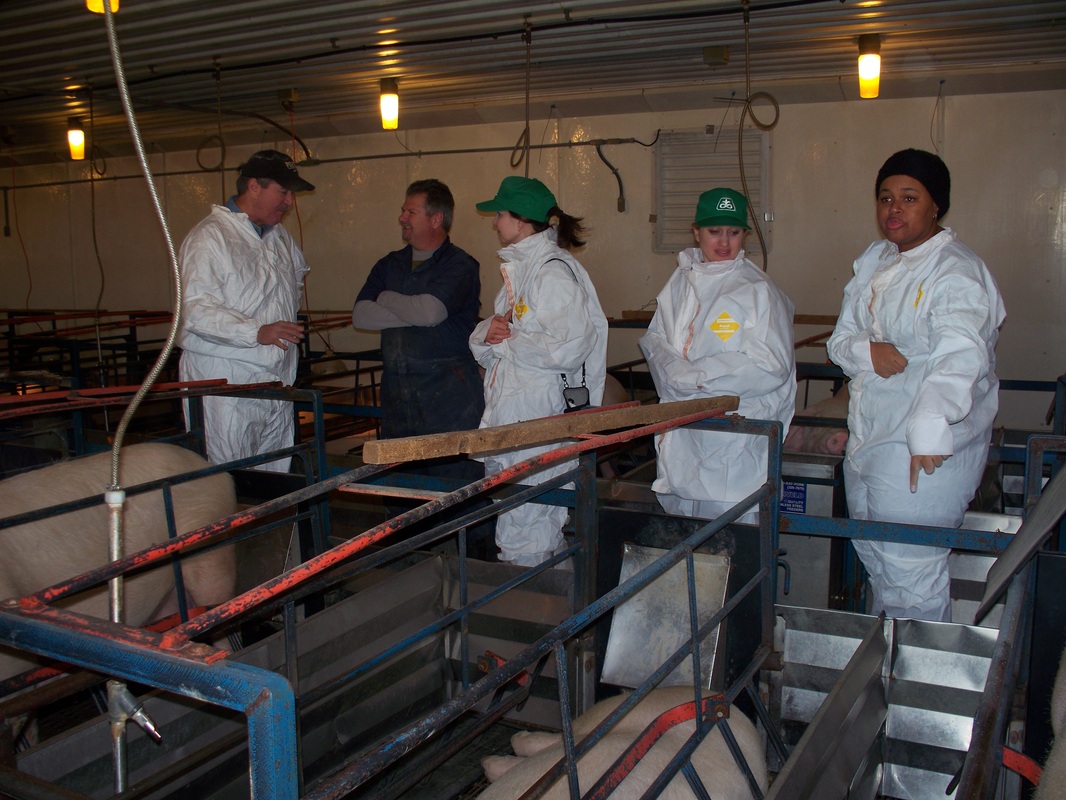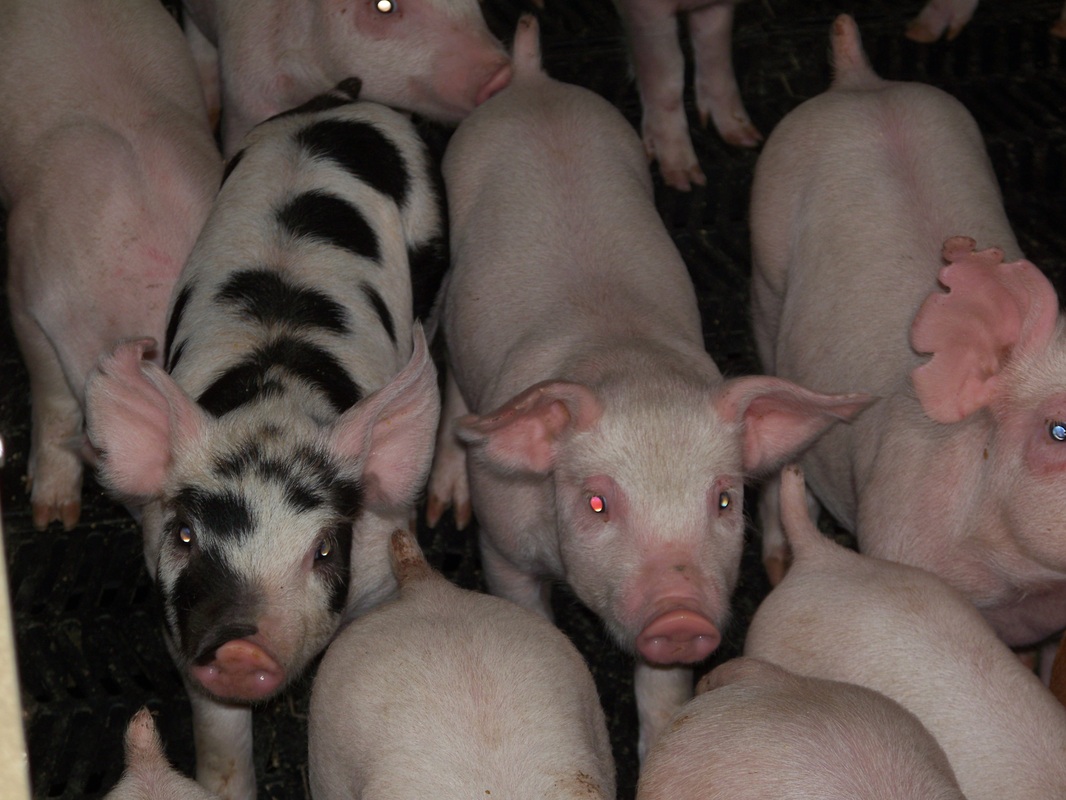I spent the morning at the Fort Wayne Farm Show listening to Rich Morrision give a presentation on "Market Strategies in 2012". Rich works with me at Diversified Services, he is a Risk Management Analyst and I am a Crop Insurance Specialist. The Farm Show was a great opportunity to see everything that is up and coming in agriculture and also to network with farmers and people in the industry.
When I got back from the Farm Show I met Brady and Billy at one of the hog barns to give a tour to some visitors. These weren't just any visitors though, they were from the International Food Information Council. They flew all the way from Washington DC to central Indiana to get a view of farm life. This included a tour of one of our confined hog operations...made us feel special!
Our farm, especially the hog operation side of it, is always welcome to visitors, tours, and anyone who has general questions about pork production. We feel this is the best way to show that we raise healthy, happy, well taken care of hogs. There are zero animal welfare issues, no animals are in distress, and all the hogs are treated well and respected as living things. Yes hogs are money makers for us, and that...along with the grain operation, is how we support four families on the farm.
Us having the farm open to visitors and tours often answers many questions and stops negative comments about livestock farming before they even start. The animals are treated well and we have nothing to hide...so come on over!
We have a farrow to finish hog operation - meaning that we have boars and sows who do the hanky panky. The sows then have piglets after a gestation period of three months, three weeks and three days (114 days). These piglets are cared for and fed for 6 months until they are market weight (250 - 270 pounds) They are then sent to the slaughter house to meet their maker and get butchered for delicious and nutritious pork.
The Peters/Mundell hog operation is a 300 sow outfit and we ship just under 5000 hogs to market annually. It is a confinment operation, which means the pigs are kept indoors at all times. This keeps the hogs at a comfortable temperature all year long, they live in state of the art buildings where the air quality is constantly monitored. The confinment operation model of pork production is often criticized by animal welfare groups who say that hogs should be able to run wild and free...but tons of research has found that the pigs stay much more healthy and happy when they are inside during the freezing cold winters and scorching hot summers.
The International Food Information Council is a non-profit group based in Washington DC and their mission is to "effectively communicate science based information on health, nutrition, and food safety for the public good." They are independent, not-for-profit, and they aren't on anyone's side...they just want the facts and thats why they fly places like our farm to get them. They "do not lobby or further any political, partisan, or corporate interest"...they simply collect information and pass it onto the public so we can have educated consumers.
They got the whole tour and nothing was hidden from them, because there is nothing to hide. We even discussed "controversial" issues such as farrowing crates, ear notches, teeth clipping, tail docking, and confinment hog barns. I already touched on confinment and the positives of that.
Farrowing crates are crates where the mama pigs are kept when they have their babies. Many animal welfare groups have the information about farrowing crates all wrong...saying that a sow spends most of her life in a crate. When in fact she only spends a few weeks in a crate, these few weeks happen a couple days before she has a littler of piglets and a couple weeks after so she can nurse them. The crates allow the sows to take care of here babies without laying on them (too much), and also the sow doesn't have to compete with all the other hogs for feed. She is fed all by herself and can eat whenever she wants and she gets plenty of feed to support her health and the health of all her newborn piglets.
Ear notches are simply a means of identification for every animal. Different places on the pig's ear mean different numbers, and these notches tell us the pigs age. We use ear notches instead of ear tags for the well being of the animal - ear tags are often chewed on, played with, and ripped out by other hogs, where as ear notches are a perfect solution to this.
Teeth clipping is a practice hog farmers do for the health and comfort of the sows. Baby pigs are born with super sharp "eye teeth", which are very comparable to a puppies teeth. These teeth will often cut the sows teets and cause infection when all the piglets are biting and sucking on the open wound. The solution to this is clipping off the tip of the teeth so they aren't so sharp. This is virtually painless to the pig because the nerve of their tooth is much further down from where the tip is clipped off.
Tail docking is done because pigs like to chew, and when they get older they will chew on anything that is available...this includes their little buddies tails. We cut the tail off close to the base so the other hogs dont' have anything to chew on. This process takes less than one second and most tails never even bleed a drop.
To find more information about the International Food Information Council just check out their webpage at www.foodinsight.org and to find out more about pork production and farming just ask me or Brady.




 RSS Feed
RSS Feed